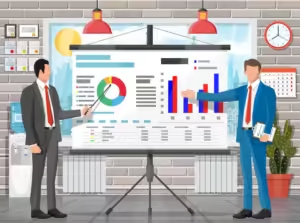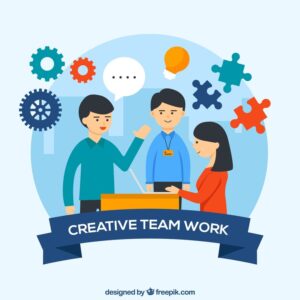Analyzing the Impact of Globalization on Human Resource Management in Small and Medium Enterprises
SEO Meta Description: Discover the profound influence of globalization on HR management in small and medium enterprises. Explore insights, challenges, and strategies for navigating this dynamic landscape effectively.
Introduction
In the contemporary business landscape, globalization has emerged as a significant force shaping various aspects of organizational operations, including human resource management (HRM). This article delves into the intricate relationship between globalization and HRM within small and medium enterprises (SMEs). By analyzing key trends, challenges, and strategies, we aim to provide actionable insights for SME leaders to thrive in an increasingly interconnected world.
Understanding Globalization’s Impact on HRM
Global Talent Acquisition Strategies
In the era of globalization, SMEs are no longer confined to local talent pools. Talent Acquisition in a Globalized World necessitates innovative strategies to attract and retain diverse talent from around the globe. Leveraging digital platforms and remote work arrangements has become imperative for tapping into international talent pools.
Cultural Diversity and Inclusion
Cultivating Diversity in the Workplace is essential for SMEs to harness the benefits of globalization fully. Embracing cultural diversity fosters creativity, innovation, and a broader perspective within the workforce. HRM practices must prioritize inclusivity, equity, and cultural sensitivity to create a conducive work environment for employees from diverse backgrounds.
Managing Virtual Teams Effectively
As globalization blurs geographical boundaries, SMEs increasingly rely on Virtual Teams and Cross-Cultural Collaboration. However, managing virtual teams poses unique challenges related to communication, coordination, and team cohesion. HRM strategies must emphasize effective virtual team management, including leveraging collaborative tools, fostering trust, and promoting cultural awareness.
Challenges and Strategies in Globalized HRM
Navigating Legal and Regulatory Frameworks
Global expansion exposes SMEs to a myriad of legal and regulatory complexities across different jurisdictions. Compliance and Legal Challenges can pose significant hurdles in areas such as employment law, data privacy, and taxation. SMEs must proactively navigate these challenges by seeking legal counsel and staying abreast of regulatory changes.
Adapting to Cultural Nuances
Cultural differences influence various HRM practices, including recruitment, performance management, and employee engagement. Cultural Sensitivity in HRM entails understanding and respecting cultural nuances to avoid misunderstandings and conflicts. Implementing cross-cultural training programs and fostering open communication channels can facilitate cultural integration within SMEs.
Mitigating Risks of Outsourcing
Outsourcing has become a prevalent strategy for SMEs to access specialized skills and reduce operational costs. However, Risk Management in Outsourcing involves mitigating risks related to data security, quality control, and supplier reliability. SMEs should conduct thorough due diligence when selecting outsourcing partners and establish robust contractual agreements to safeguard their interests.
Leveraging Technology for Globalized HRM
Digital Transformation in HRM
Technology plays a pivotal role in enabling SMEs to streamline HRM processes and adapt to the demands of globalization. Harnessing HR Technology Solutions such as cloud-based HRIS, AI-driven recruitment tools, and virtual onboarding platforms can enhance efficiency, scalability, and agility in HRM practices.
Data-Driven Decision Making
In the age of big data, SMEs can leverage People Analytics and Predictive HRM to gain actionable insights into employee behavior, performance trends, and talent acquisition strategies. By harnessing data analytics tools and metrics, SMEs can make informed decisions to optimize HRM outcomes and drive organizational success.
Frequently Asked Questions (FAQs)
How does globalization impact recruitment practices in SMEs?
- Globalization expands the talent pool for SMEs, enabling them to recruit from diverse geographical locations and cultural backgrounds. However, it also necessitates adapting recruitment strategies to attract and retain international talent effectively.
What are the key challenges SMEs face in managing a global workforce?
- SMEs encounter challenges such as cultural differences, legal complexities, and communication barriers when managing a global workforce. Overcoming these challenges requires proactive HRM strategies focused on cultural sensitivity, compliance, and effective communication.
How can SMEs mitigate the risks associated with outsourcing HR functions?
- To mitigate risks associated with outsourcing HR functions, SMEs should conduct thorough due diligence when selecting outsourcing partners, establish clear contractual agreements, and implement robust data security measures to safeguard sensitive information.
What role does technology play in facilitating globalized HRM practices?
- Technology enables SMEs to streamline HRM processes, enhance efficiency, and adapt to the demands of globalization. From digital HRIS platforms to data analytics tools, technology empowers SMEs to make data-driven decisions and optimize HRM outcomes.
How can SMEs promote cultural diversity and inclusion in the workplace?
- SMEs can promote cultural diversity and inclusion by implementing inclusive HRM practices, fostering open communication channels, and providing cross-cultural training programs for employees. Embracing diversity enhances creativity, innovation, and organizational resilience.
What strategies can SMEs adopt to effectively manage virtual teams in a globalized environment?
- To effectively manage virtual teams in a globalized environment, SMEs should prioritize clear communication, establish trust among team members, and leverage collaborative technologies. Regular virtual meetings, goal alignment, and cultural sensitivity training can enhance virtual team performance.
Conclusion
In conclusion, the impact of globalization on HRM in SMEs is profound and multifaceted. By embracing cultural diversity, leveraging technology, and adopting proactive strategies, SMEs can navigate the challenges and capitalize on the opportunities presented by globalization. Effective globalized HRM practices are essential for SMEs to thrive in an increasingly interconnected and competitive business landscape.
































